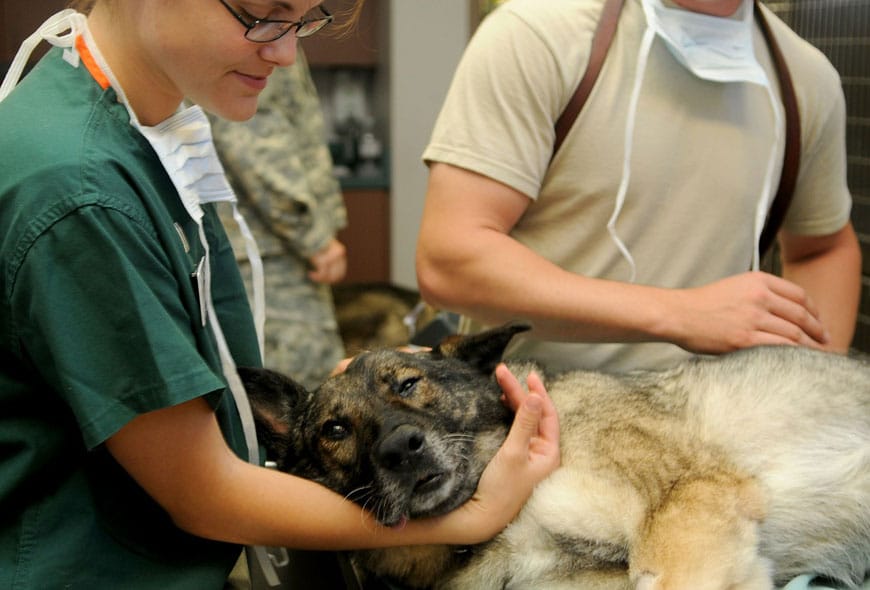Pet Insurance Could be The Next Top Employee Benefit
According to American Pet Products Association, the total global pet industry reached $60.28 billion for the year 2015, and it is estimated to be $62.75 billion by the end of 2016.
More people are considering their animals to be members of their families and will go the extra mile to ensure that their pets are comfortable, happy, and healthy. Pets are included in various family occasions such as trips, vacations – and even weddings. And even when choosing housing, most people prefer apartments or homes with updated pet friendly housing laws.
But when a pet is injured or ill, medical bills can be expensive, thus making pet insurance increasingly more appealing. Playing off the pet phenomenon, employers are adding pet insurance as a job perk in order to attract and retain their employees. Today, 1 in 3 Fortune 500 companies offer pet insurance as a voluntary employee benefit.
How Do Pet Insurance Work? Just like regular human health insurance, pet insurance covers a variety of animals including domestic and exotic, and works on a similar premium structure. Once an insurance policy is given to an animal, the insurers will pay out a certain amount of money each month in order to reduce the overall medical expense when their pet becomes sick or injured.
Types of Pet Insurances
There are several types of pet insurance policies. Each provide a different amount of coverage. The basics include reimbursement for claims made for certain veterinary expenses. These insurance policies often do not cover the full costs incurred but mainly only cover part or most of the expense. While the pet owner may have to pay in, funds claimed go a long way when covering medical expenses for one’s furry friend.
“Like any kind of health care offering (pet insurance) is viewed as an employee enticement and retention tool,” says Charles J. Sebaski, an insurance analyst to Yahoo News. Basically, there are four types of pet insured policies.
- Lifetime Cover– This is the most expensive policy but your pet will be covered for as long as the policy stays active, your pet will be covered for life.
- Time-Limited– These policies only stay intact for a period of 12 months and limits coverage and payouts on previously covered conditions when renewed.
- Accident Only– The cheapest type of policy, this policy only covers emergencies. You can only claim if your pet has been involved in some type of accident.
- Maximum Benefits– This policy has no limit to when you can claim but this policy only pays out a certain amount per condition.
What do These Insurance Cover?
The coverage of pet insurance plans may differ from one provider to the next. Coverage can vary depending on the type of pet you have and its conditions. And like medical coverage for people, some pet insurance policies can be a little complicated. Here are some of the common pet health insurance coverage:
- Wellness care (annual exams, test and vaccines)
- Dental Care
- Therapy for correcting behavioral problems
- Acupuncture and Physiotherapy
- Pet sitting
- Cremation
- Injuries and damages to property
- Chronic disease for eligible pets
Also, it’s worth noting that if you get pet insurance it doesn’t mean you have to leave your former vet for a new one. Most users are allowed to visit any licensed veterinarian of their choice. The owner pays his vet directly and uses the pet insurance for reimbursement. It is then up to the insurance company to review and pay the percentage of the billed items covered in its policy. To know the best plan for you and your furry friend, it is always advisable to compare available pet insurance plans before signing up.
Takeaways
Vet bills can easily sky rocket. Many pets are put down because owners cannot afford the specialized treatment needed to treat the animal. This is a heartbreaking reality for many owners, but with insurance that need may not be the case.
Pet insurance will help cover your pet when they need it most. This will be less of a burden on you and on your pocket. Aside from reducing 90 percent of your vet bills, you can also be assured that your pet will always be covered for treatment. Think of this as planning for your pet’s future in the best way possible.











